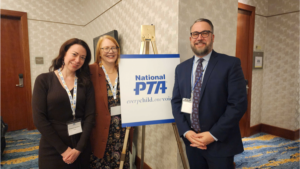October 1, 2014
by: Gari Lister
Today I am delighted to highlight one of the fabulous interviews from the second day of ATN‘s Educating Traumatized Children Summit. And this one is totally near and dear to my heart because it is an interview with the very awesome Melissa Sadin, who also just happens to be one of the writers for the ATN Blog. So if you learned from her today, make sure you tune in over the next several months because she will be sharing much more useful information!
Melissa Sadin: ADHD vs. Trauma: When The Duck in Your Class Roars like a Lion
Sadin approaches the challenge of educating traumatized children from two perspectives: she is a school administrator who has taught in the classroom, but she is also an adoptive mom to a son with attachment and trauma challenges. Her interview addresses the problem of children diagnosed with ADHD who do not seem to respond to the classroom techniques teachers use to help children who have difficulty with attention. Sadin suggests that the tools don’t work because the children are not, in fact, “ducks” — children with ADHD — but are instead “lions” — traumatized children — who actually have very different challenges because of the impact that early trauma has had on the very way their brains work.
Sadin explains that to help “lions” teachers need to make a fundamental mental shift: they need to approach these children from the perspective that the children are doing the best that they can. She challenges the entire concept of children doing things to “get attention” and argues that if children are acting out, they are asking for help, and we need to find ways of reaching them.
Sadin emphasizes that we need to educate teachers about trauma — if you explain to a teacher what is happening in traumatized children’s brains, she argues, he or she always wants to understand which tools and approaches will help them reach those children.
So how do teachers figure out which children have ADHD and which have early trauma? By learning about the child’s history — so often children are diagnosed as ADHD simply based on their behaviors without any reference to their experiences. Sadin also advises talking to the child’s parents, and says that a child’s parents are generally the best source for what works and does not work with their child. Often, she suggests, techniques that work at home may work in the classroom as well.
Beyond those basic concepts, some of her suggestions for teachers working with traumatized children include:
- Stay completely calm in the classroom.
- Adopt a playful attitude (which she acknowledges may be a change from old fashioned concepts).
- Use a sense of humor, which can be very powerful — and is NOT sarcasm, which can be especially devastating to a traumatized child and should never be used in the classroom.
- Use what she calls the “language of attachment.” Don’t coddle children; be firm. Rather than asking children to sit down, say “I need you to sit down.” Rather than correcting (e.g., repeatedly telling a child to stop banging a pencil on the desk), redirect the energy.
- Use the Apology of Action and Literacy developed by Responsive Classroom. She explains that the typical “sorry” has little meaning for traumatized children. Often, furthermore, they are unwilling to say “sorry” or they say it without any significance. On the other hand, traumatized children can get very wrapped up in their mistakes. They make a mistake, they become ashamed of what they have done, and decide they are terrible. Having children take actions to make up for their mistakes allows them to “fix” what happened and move forward.
- Keep misbehaving children in the room — don’t send them to the principal, because sending them away sends traumatized children the message that you are throwing them away.
- Always have conversations about misbehavior or other challenges with traumatized children in private, not in front of the rest of the class.
Sadin warns that to be successful at these techniques, teachers must “check their own baggage at the door.” She warns that traumatized children are brilliant at pushing buttons and every teacher needs to be fully aware of their own “issues”.
And finally, she shared an inspirational thought for the day for those of us dealing with traumatized children:
George Washington Carver said: “All learning is understanding relationships.”


